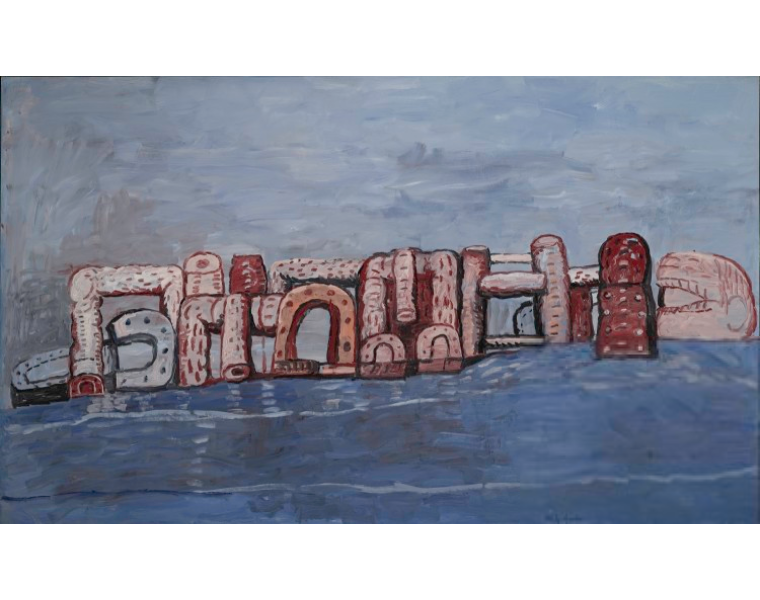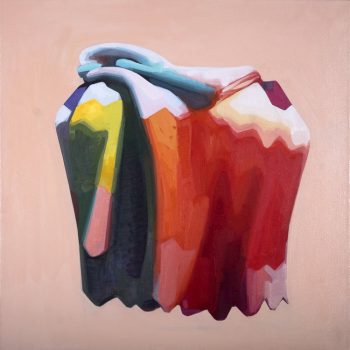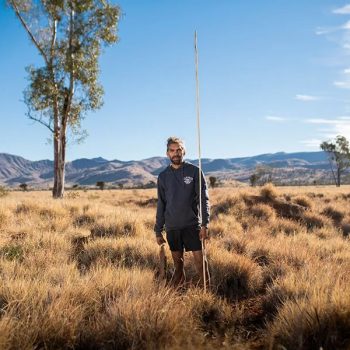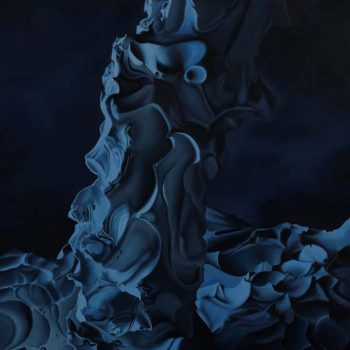How to discover a city’s heart! The first thing I do to access the heart of a city upon arrival is to head straight to the public art gallery. It is possible to discover the values of a city by taking in the current exhibitions, the exhibition and event schedule and exploring its public art collection.
DAM! Thinking of visiting Denver for the first time, I was happily wafting through the Denver Art Museum’s website when I remembered Philip Guston, an artist I loved from university days. I was reminded anew of how compelling I found his work and as a true outsider, both how and if the content and execution of his later works (still) remained provocative.
In the collection at Denver Art Museum, I found Blue Water from 1976. The intrigue came flooding back and interestingly as a now older art lover, I immediately saw this work in a new light. Like most of Guston’s work, Blue Water is mesmerising and holds infinite questions. Why is it so mesmerising and absorbing?
A quick jaunt through history first! Of Jewish roots, Philip Guston (1913-1980) came to some prominence as a muralist during the late depression years and was later named a second-generation Abstract Expressionist. At some point in the 1960’s, Guston became disillusioned with the limits of abstraction, henceforth from 1968 his style changed to a focus on narrative elements depicted in a rather sombre “cartoon-styled realism”. The change is perhaps unsurprising given the rapid state of change in America throughout the 1960’s. Additionally, in the background is Guston’s transition through WWII as Jewish and now a man in or approaching his fifties with myriad experiences under his belt.
Blue Water is typical of Guston’s later work and is notable for the monolithic structure isolated upon the ocean, the luscious colours and fleshy, esoteric subject matter. In this work the combined forms make up a superstructure; seemingly one constructed from quasi-intestinal pipes, partial boots or horseshoes and visceral phallic-like tubes. The entire assemblage appears to be building up in an ad hoc fashion. While it seems to float as a whole it has separate bridge-like channels which allow access from one precarious (or even pointless) side to the other. There is a sense, however, that we are viewing a type of message because of the linear formation (or continuum) from right to left, and back again, and it contains text like forms under the gaze of an all-seeing eye.
Realities both known and imagined! Although on some level the forms we are observing appear familiar, neither the composition nor the subject matter is identifiable as anything we know absolutely; the closest thing to real life the horseshoe-like and sole-like objects. Therefore, while compelling and alluring the subject seems to be a deliberate mix of realities both approaching the real world as well as symbolic.
America in turmoil! Experiencing his own crisis in art, Guston was immersed in the turmoil America had experienced across the decade from the early 1960’s into the 1970’s. It was a period characterised by the civil rights movement culminating in the death of Martin Luther King, the Counter-cultural movement, the Vietnam war, the public voice of the gay and lesbian movement, political assassinations and “Nixon’s obstruction of justice in the Watergate scandal “
Big brother! Big institutions including government control the social direction a country takes; the everyday person has little control over day-to-day life except via public demonstrations and at the ballot box. How we think life should unfold is often at odds with how life does unfold and there is not much we can do about it because typically, “big brother” (enhanced here by the human-like head with the dominent eye) doesn’t listen, at least not initially.
Perhaps Blue Water symbolises in part the way in which disenfranchised American’s (youth in particular) throughout the 1960’s and 1970’s felt the authorities’ “heavy boot of oppression” bearing down upon them stifling freedom of choice and expression. Think about conscientious objection and the fact that at one point America had in the order of 500,000 troops in Vietnam; many of whom, were not there of their own free will. Therefore, it is possible to see in Blue Water the superstructures governing society imposing policy on the American people in parts of the world they had no jurisdiction over, using the flesh and blood of American youth to do so.
Superstructures such as government, are far from secure, themselves; they are ultimately vulnerable to the ballot box, the 24 hour news cycle, the vicissitudes of everyday conditions and the cynicism of its subjects.
Big brother out of touch! Blue Water captures our imagination not least because of the oil rig-like configuration rising up out of the ocean. It is almost as if with each wave a new form is washed up and added to the monolithic site which is mutating out of control. Institutions often play catch-up in relation to what is happening in the streets, or on the ground; the superstructure is remote and isolated, out of touch.
The visceral or fleshy forms hint at vulnerability and insecurity: of man against forces greater than himself, he is a pawn in a play not of his understanding or willingness; effectively jettisoned on the wreck of American society. For all that, he has the numbers and eventually big brother has to listen in which case the old order is cut adrift and a new one takes its place.
In conclusion, Blue Water is avant-garde in every sense. It was in 1976 and it is in 2019. Firstly, the naive child-like depiction of subject matter; innocence or ignorance? Secondly, the luscious beauty of the palette contrasted with both soft visceral and hard brutish forms, whip-cracks our attention in an effort to understand. Thirdly, the subject matter can be interpreted in terms of today’s society equally with any other time period because the symbolism is universal and enduring; it is those attributes which make great art. These aspects are just some of what gives this work its captivating and endlessly intriguing pull.
Conclusion! In answer to myself, the city of Denver values art, culture, community involvement and diversity because of DAM’s far-reaching, diverse and enquiring activities. The exhibition programme, the art collection and recent acquisitions (Mark Bradford’s Realness 2016) tell a clear story of the value of education. Moreover, a belief in the powerful voice of art to reach people in different ways across all levels of society. A need to at times turn over the soil to reach new and fertile ground in order to maintain those deep and broad connections. These are values we can link back to Blue Water in DAM’s collection.
































